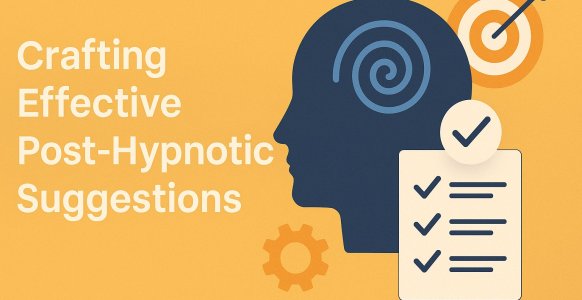
Ever wonder how a hypnotherapist can help someone quit smoking by simply suggesting they’ll find cigarettes disgusting? Or how a confidence boost from a session can last for weeks afterward?
That’s the power of post-hypnotic suggestions at work.
Think of them as mental seeds planted during hypnosis that bloom later—after your client has left the session and returned to their everyday life. When done right, these suggestions become automatic responses that can help many clients create lasting positive changes without conscious effort.
But here’s the thing: crafting effective post-hypnotic suggestions is both an art and a science. Use the wrong words, and your suggestion falls flat. Get the timing wrong, and it never activates. Make it too complex, and the unconscious mind simply ignores it.
That’s why understanding the mechanics behind post-hypnotic suggestions—and knowing exactly how to structure, test, and remove them—is essential for any serious hypnotherapist.
In this comprehensive guide, you’ll discover the proven framework for creating post-hypnotic suggestions that actually work, along with 25 ready-to-adapt examples you can start using immediately.
What Exactly Are Post-Hypnotic Suggestions?
Let’s clear something up right away: while regular hypnotic suggestions work during the trance state itself, post-hypnotic suggestions are designed to take effect after the session ends—when your client is back in their normal waking state.
Here’s how they work: During hypnosis, you give your client a specific instruction tied to a trigger. Later, when they encounter that trigger in daily life, the suggested behavior or feeling automatically activates—often without conscious awareness.
For example, you might suggest: “Every time you see a red traffic light, you’ll take three deep breaths and feel a wave of calm wash over you.”
Days later, your anxious client stops at a red light and—without thinking about it—takes those deep breaths and feels instantly calmer. They might not even remember why they’re doing it.
That’s a post-hypnotic suggestion in action.
The fascinating part? Research suggests post-hypnotic suggestions can remain effective long-term, sometimes even years later, when the trigger context remains consistent. As long as the context is right and the trigger occurs, the suggestion continues to work—making them incredibly powerful tools for lasting behavioral change.
When to Use and When NOT to Use Post-Hypnotic Suggestions
Post-hypnotic suggestions aren’t a magic bullet. They’re tools, and like any tool, they work best in specific situations.
When to Use Them
For Reinforcing New Behaviors: Post-hypnotic suggestions excel at helping clients maintain positive changes between sessions. For instance, suggesting that each morning when their feet hit the floor, they’ll feel motivated to exercise.
For Breaking Unwanted Patterns: They’re particularly effective for interrupting habitual behaviors. A smoker reaching for cigarettes might suddenly feel compelled to drink water instead.
For Managing Emotional States: Anxiety, confidence issues, and mood problems respond well to triggered emotional shifts. A public speaker might feel confidence surge the moment they step on stage.
For Creating Automatic Responses: When you want a behavior to happen without conscious thought—like remembering to take medication when seeing their toothbrush—post-hypnotic suggestions shine.
When NOT to Use Them
When Core Issues Haven’t Been Addressed: If someone smokes to cope with deep trauma, a simple “cigarettes taste terrible” suggestion won’t stick. The unconscious mind will reject it because smoking still serves a purpose.
For Complex Multi-Step Behaviors: Keep it simple. “When you see food, you’ll calculate calories, check your meal plan, measure portions, and then decide whether to eat” is too complex. The unconscious prefers single, clear actions.
When Safety Is a Concern: Never create suggestions that could activate in dangerous situations. Avoid triggers that might occur while driving, operating machinery, or in other contexts where altered awareness could be harmful.
Without Proper Identity Shifts: Here’s a crucial point many hypnotherapists miss: if your client still identifies as “a smoker” or “an anxious person,” surface-level suggestions won’t take hold. You must first help them shift their self-concept during the session.
The Structure of Effective Post-Hypnotic Suggestions
Creating powerful post-hypnotic suggestions isn’t about using magical words—it’s about following a proven structure that the unconscious mind readily accepts. Read on to discover the 5 essential elements to craft effective suggestions.
The Five Essential Elements
- Clear, Specific Trigger Your trigger should be something that naturally occurs in your client’s daily life. The best triggers are:
- Predictable (morning alarm, seeing their car keys)
- Frequent enough to be useful but not overwhelming
- Contextually appropriate (not weird or unusual)
- Within the client’s control or environment
- Simple, Direct Action The unconscious mind loves clarity. Your suggested response should be:
- One single behavior or feeling
- Stated in positive terms (what TO do, not what NOT to do)
- Physically possible and reasonable
- Something the client can do automatically
- Present or Continuous Tense Never use future tense. Instead of “you will feel confident,” use “you feel confident” or “confidence flows through you.” The unconscious mind operates in the now.
- Positive Framing The unconscious doesn’t process negatives well. “You don’t want cigarettes” becomes “want cigarettes” in the unconscious mind. Instead, use “You enjoy fresh, clean air” or “Water satisfies you completely.”
- Believable and Achievable If it sounds impossible, the unconscious rejects it. “You’ll never feel stressed again” won’t work, but “You handle challenges with increasing calm” will.
The Power of Repetition and Variation
Here’s what research tells us: suggestions need repetition to stick, but exact repetition makes them lose power. The solution? Say the same thing in different ways.
Instead of repeating “You feel confident” five times, you might say:
- “Confidence radiates from within you”
- “You stand tall with natural self-assurance”
- “A powerful sense of certainty fills your body”
- “You know your worth and value”
- “Inner strength flows through every cell”
Same message, different words. This keeps the unconscious engaged while reinforcing the core suggestion.
25 Ready-to-Adapt Post-Hypnotic Suggestion Examples
Now let’s dive into the fun part. Here are field-tested suggestions organized by common therapeutic goals you can use to help others make positive and lasting changes in their lives.
Remember to adapt these to fit your client’s specific situation and language patterns.
For Confidence and Self-Esteem
- “Each time you look in a mirror, you smile and feel genuine appreciation for the person looking back at you.”
- “When you shake someone’s hand, confidence automatically flows through your entire body.”
- “The moment you enter any room, you naturally stand a little taller and feel completely comfortable in your own skin.”
- “Whenever you hear your name, you feel a surge of self-worth and personal power.”
- “Each time you put on your shoes, you’re stepping into a more confident version of yourself.”
For Anxiety and Stress Management
- “When you touch your thumb to your middle finger, an immediate wave of calm washes through you.”
- “Every red traffic light becomes your cue to take three deep breaths and release all tension.”
- “The moment you feel stress building, your breathing automatically deepens and slows.”
- “When you see the color blue, peaceful feelings flow naturally through your mind and body.”
- “Each time you wash your hands, you wash away worry and feel refreshed.”
For Breaking Bad Habits
- “When you see cigarettes, you naturally take a deep, refreshing breath of clean air and feel the appeal of fresh breathing.”
- “Whenever you notice alcohol, your attention naturally shifts to the refreshing taste of water or another healthier option that leaves you feeling clear and energized.”
- “Every time you open the refrigerator, you pause, breathe, and ask ‘Am I truly hungry?'”
- “When you feel the urge to bite your nails, your hands naturally relax and rest comfortably.”
- “You naturally find fresh fruit more satisfying and enjoyable, while sugary foods lose their appeal.”
For Motivation and Productivity
- “Your morning alarm instantly fills you with energy and enthusiasm for the day ahead.”
- “When you sit at your desk, focus flows naturally and distractions fade away.”
- “Opening your planner or calendar triggers immediate clarity about your priorities.”
- “The phrase ‘I can do this’ automatically appears in your mind when facing any challenge.”
- “Each completed task energizes you to tackle the next one with even more enthusiasm.”
For Sleep and Relaxation
- “The moment your head touches the pillow, your mind clears and your body completely relaxes.”
- “When you turn off the lights, sleepiness washes over you like a warm, comfortable blanket.”
- “Counting backward from 10 automatically guides you into deep, restful sleep.”
- “Your bed becomes a sanctuary where worries cannot follow.”
- “The sound of your own breathing naturally lulls you into peaceful slumber.”
>> Want to make your suggestions even more effective with Hypnotic Language. Claim your Free Hypnotic Language Shortcut System here (just cover shipping).
Testing Your Post-Hypnotic Suggestions
Never assume a suggestion has taken hold—always test it. Here’s how:
The In-Session Test
Before bringing your client out of trance, you can test the suggestion while they’re still hypnotized:
“In a moment, while still deeply relaxed, you’ll open your eyes and (trigger occurs). Notice how (suggested response) happens automatically. Then you’ll close your eyes and go even deeper.”
For example:
“In a moment, while still deeply relaxed, you’ll open your eyes and touch your thumb to your index finger. Notice how an immediate wave of calm washes through you automatically. Then you’ll close your eyes and go even deeper.”
Watch their response. If they don’t react as expected, you need to either:
- Deepen the trance
- Restructure the suggestion
- Address any unconscious resistance
The Rehearsal Method
If you don’t have the trigger present in your surroundings during the session, you can also have your client mentally rehearse the trigger and response while in trance:
“Imagine yourself tomorrow morning. See yourself waking up. Feel your feet touch the floor. Notice that surge of motivation flooding through you. See yourself immediately wanting to exercise. That’s right.”
This mental rehearsal strengthens the neural pathways and increases the likelihood of real-world success. Plus, you can observe their response to see if imagining the trigger creates the desired outcome.
The Unconscious Signal Test
For deeper validation, use ideomotor responses:
“As your unconscious mind begins to embrace this suggestion at a deeper level, you may find your right hand starting to feel lighter… almost as if it wants to float upward all by itself… and you can simply allow that movement to happen in whatever way feels right for you.”
No response or a different response indicates resistance that may need addressing.
Real-World Testing
The ultimate test happens in daily life. At the next session, ask:
- “How did the suggestions work for you?”
- “Did you notice anything different about (specific situation)?”
- “Tell me about your week.”
Listen for evidence that the suggestions activated naturally, not through conscious effort.
How to Remove or Modify Post-Hypnotic Suggestions
Sometimes suggestions need updating or removal. Maybe circumstances changed, the suggestion served its purpose, or it’s creating unexpected problems.
The Clean Removal Process
- Re-induce trance to the same depth as when you installed the suggestion
- Acknowledge the suggestion explicitly: “The suggestion that (specific trigger and response) has served its purpose well.”
- Cancel it clearly: “From this moment forward, that suggestion is completely dissolved and no longer has any effect. You are free from it entirely.”
- Confirm the removal: “All suggestions return to normal. You respond to (trigger) in whatever way feels most natural and appropriate for you.”
- Test the removal using the same methods you used to test installation
The Modification Method
Instead of removing suggestions entirely, you can update them:
“The suggestion about (old version) now transforms. From now on, when (trigger), you (new response). This new response replaces the old one completely.”
Important Safety Notes
Always remove suggestions at the end of therapy: Don’t leave active suggestions in place after treatment ends unless explicitly agreed upon for long-term maintenance.
Time-box suggestions when appropriate: “This suggestion remains active for the next two weeks” gives a natural expiration date.
Document everything: Keep detailed records of every post-hypnotic suggestion you install, modify, or remove.
Common Mistakes to Avoid
Even experienced hypnotherapists sometimes stumble with post-hypnotic suggestions. Here are the pitfalls to watch for:
Making Suggestions Too Complex: The unconscious mind isn’t logical—it’s literal and simple. Keep suggestions to one clear action or feeling.
Using Negative Language: “Don’t think about smoking” makes them think about smoking. Always frame positively.
Forgetting Context: A suggestion to “feel relaxed” that activates while driving could be dangerous. Always consider when and where triggers might occur.
Not Writing Them Down: Improvising suggestions can create ambiguity and risks. It’s best practice to script and document them in advance.
Ignoring Identity Conflicts: If someone sees themselves as “a stressed person,” suggestions for calm won’t stick until you help shift that identity.
Expecting Miracles: Post-hypnotic suggestions complement good therapy—they don’t replace it. Address underlying issues first.
Advanced Techniques for Maximum Impact
Ready to take your post-hypnotic suggestions to the next level? Here are advanced strategies used by master hypnotherapists:
Layering Multiple Triggers
Instead of one trigger, create redundancy: “When you see water, feel thirst, or open the refrigerator, you naturally become more aware of how refreshing and satisfying healthy choices can be.”
Emotional Amplification
Link suggestions to powerful positive emotions: “As confidence fills you, remember the proudest moment of your life. Feel that same power now, knowing it’s always available to you.”
Future Pacing Chains
Create suggestions that build on themselves: “Each time this response serves you well, it becomes easier and more natural the next time.”
The Compound Effect Strategy
Build suggestions that strengthen over time through strategic layering:
Session 1: Install basic trigger and response “When you see water, you feel naturally thirsty and satisfied by it.”
Session 2: Add emotional reinforcement “Each time you choose water, pride and self-respect flow through you.”
Session 3: Create identity integration “You find yourself becoming someone who naturally prefers water, and this choice reflects your healthy values.”
Session 4: Install future-pacing “Every successful choice makes the next one feel more natural and satisfying.”
This compound approach creates multiple reinforcing layers that become increasingly robust over time.
Contextual Flexibility
Build in appropriate variations: “In professional settings, this confidence shows as quiet competence. With friends, it feels like warm authenticity—always adapting to the situation.”
Ethical Considerations
With great power comes great responsibility. Post-hypnotic suggestions can profoundly impact lives, so ethical practice is non-negotiable.
Always prioritize client welfare: Every suggestion should genuinely benefit the client, not serve your agenda or make them dependent on you.
Obtain informed consent: Clients should understand what post-hypnotic suggestions are and agree to their use.
Respect autonomy: Suggestions should enhance choice, not remove it. Clients must always retain the ability to override suggestions consciously.
Consider long-term effects: How will this suggestion affect them in six months? A year? Make sure it remains beneficial over time.
Stay within your competence: Don’t use post-hypnotic suggestions to address issues beyond your training and expertise.
Conclusion: Your Next Steps
The unconscious mind is waiting to be your ally in change. Give it the right suggestions, and watch your clients transform their lives—one trigger at a time.
Remember these key takeaways:
- Structure matters more than specific words—follow the five essential elements
- Test everything—never assume a suggestion has taken hold
- Keep it simple—the unconscious mind prefers clear, single actions
- Address identity first—surface suggestions won’t stick without deeper alignment
- Document and track—professional practice requires careful record-keeping
- Remove when done—don’t leave active suggestions without purpose
The 25 examples provided here are starting points. Adapt them to your client’s language, situation, and goals. Listen to how they describe their desired outcomes and mirror their words in your suggestions.
However, remember that they’re not magic words that override free will; they’re carefully structured communications that help the unconscious mind support conscious goals.
Most importantly, remember that post-hypnotic suggestions are just one tool in your therapeutic toolkit. They work best as part of a comprehensive approach that addresses root causes, not just symptoms.
Want to deepen your conversational hypnosis skills so you can help people make real, lasting changes in their lives?
The foundational Conversational Hypnosis Video Training Crash Course shows you step-by-step methods to:
- Guide someone into trance using everyday conversation
- Create powerful suggestions that bypass resistance
- Help clients (and even friends or colleagues) experience meaningful transformations
And the best part? You can start applying what you learn right away without complicated scripts or years of theory – just practical, proven techniques that work in real life.
Find out how to get instant access to the Conversational Hypnosis Video Training Crash Course here.

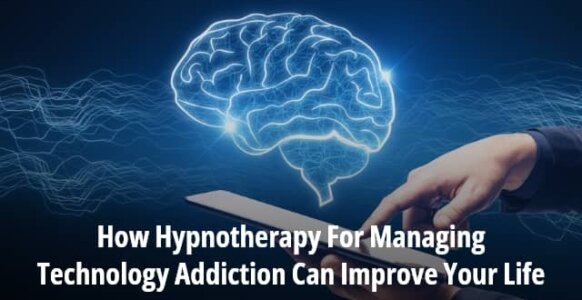
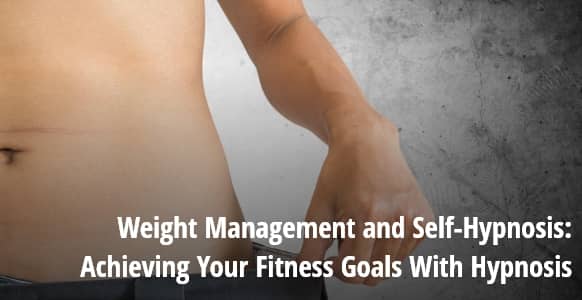


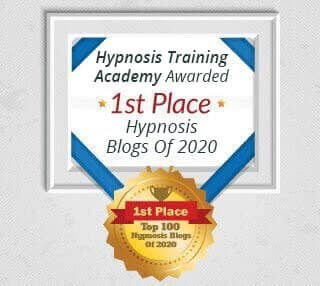
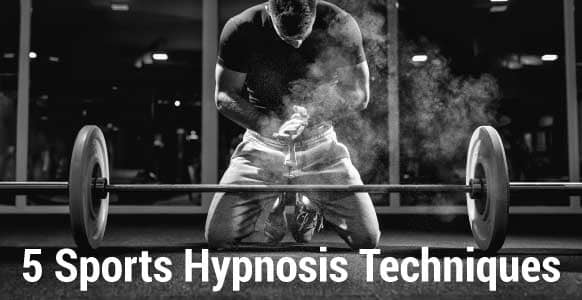

![Yogic Breathing For Hypnosis: 3 Easy Techniques To Ground & Relax Your Clients Before Inducing A Hypnotic Trance [Includes Infographic] Yogic Breathing For Hypnosis: 3 Easy Techniques To Ground & Relax Your Clients Before Inducing A Hypnotic Trance [Includes Infographic]](https://hypnosistrainingacademy.com/wp-content/uploads/2019/05/yogic-breathing-for-hypnosis.jpg)

![[ADVANCED GUIDE] How To Master Hypnotic Regression Therapy - Part I: Essential Principles To Profoundly Transform Your Subject’s Emotional Trauma [ADVANCED GUIDE] How To Master Hypnotic Regression Therapy - Part I: Essential Principles To Profoundly Transform Your Subject’s Emotional Trauma](https://hypnosistrainingacademy.com/wp-content/uploads/2016/09/hypnotic-regression-therapy-essential-principles.jpg)

